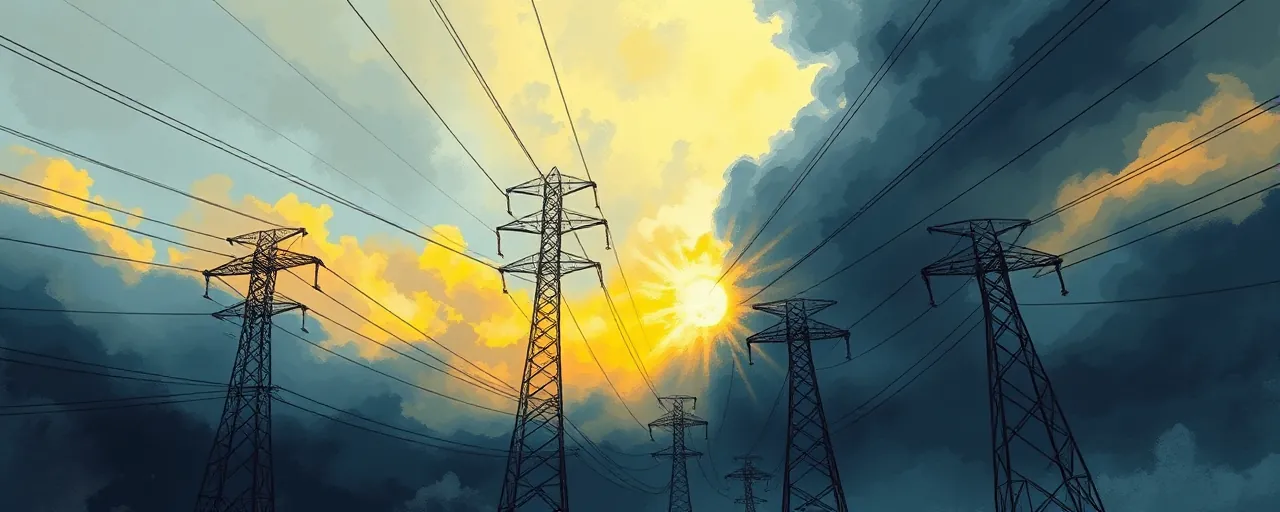A Bold Move From the White House
On April 8, 2025, President Donald Trump signed an executive order that sent ripples through the nation’s energy landscape. The directive aims to dismantle state-level energy regulations deemed a threat to American energy production, targeting policies in places like New York and California. It’s a decisive step, one that promises to reshape how energy is managed across state lines, and it’s got people talking, from factory workers in Pennsylvania to families budgeting for their next utility bill.
The order doesn’t mince words. It accuses certain states of overstepping their bounds, imposing rules that jack up costs and choke out traditional energy producers. For the administration, this is about leveling the playing field and keeping energy affordable. But the move lands at a time when tensions over who controls the nation’s energy future are already boiling over, pitting federal power against state rights in a showdown that’s anything but quiet.
Why the Fight Matters to You
At its core, this clash is about more than legal jargon or political flexing. Energy policies hit wallets hard. Take California, where strict carbon caps have businesses scrambling to buy credits just to keep operating. Households there might see an extra $470 tacked onto their yearly energy bills by decade’s end, according to economic projections. Meanwhile, states like Pennsylvania, tied to fossil fuels, could lose nearly 38,000 jobs if clean energy rollbacks take hold, analysts warn.
It’s not all doom and gloom. Supporters of the White House stance argue that peeling back these state rules could unshackle energy companies, driving down costs for everyone. Yet the flip side lingers: fossil fuel reliance might stall cleaner tech growth, leaving the U.S. leaning on aging systems while global competitors race ahead. For the average person, it’s a gamble between cheaper gas today and a stable tomorrow.
The Legal Battlefield Takes Shape
The executive order hands the Attorney General 60 days to identify and challenge state laws seen as illegal under this new framework. Think New York’s Climate Superfund law, which demands billions from energy firms for past emissions, or Vermont’s similar push. These policies aren’t going down without a fight, legal experts say, pointing to lawsuits already brewing over federal overreach and state sovereignty.
Courtrooms have seen this dance before. Back in 2022, the Supreme Court clipped the EPA’s wings in West Virginia v. EPA, signaling a lean toward state control. But states suing energy companies, like California’s nuisance claims, argue they’re tackling local harms, not rewriting national rules. The administration’s move could spark a flurry of cases, testing where the line between federal and state power really lies.
Voices on Both Sides Weigh In
Advocates for state-led efforts, including environmental groups and some Democratic-led governments, see these laws as vital tools to hold polluters accountable. They point to rising costs from floods and wildfires, insisting companies should foot the bill, not taxpayers. On the other hand, energy industry leaders and federal policy backers argue that patchwork state regulations strangle interstate commerce, hiking prices for folks far beyond the states writing the rules.
Caught in the middle are economists and energy planners. Some highlight how past state renewable mandates spurred jobs and innovation, while others note that fossil fuel states thrived under looser reins. History offers no clear winner: the 2005 Energy Policy Act boosted transmission but tangled state-federal wires, a knot this order aims to cut through, for better or worse.
What’s Next for Energy in America
This executive order isn’t the final word. Legal challenges are stacking up, and Congress might yet step in if the courts don’t settle things fast. The administration’s push to speed up permits for oil, gas, and nuclear projects could juice production, but paused clean energy funds from laws like the Inflation Reduction Act leave solar and wind plans in limbo. It’s a high-stakes pivot, and the fallout’s still hazy.
For now, the debate hums with urgency. Families want heat they can afford, businesses need power they can rely on, and states crave a say in their own backyards. Whether this order delivers relief or just more friction depends on how the pieces fall, a puzzle that’s as much about people as it is about policy.
